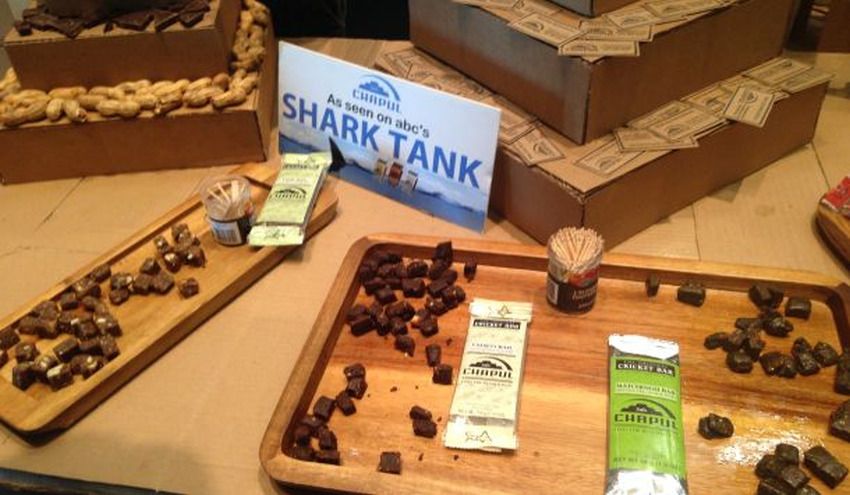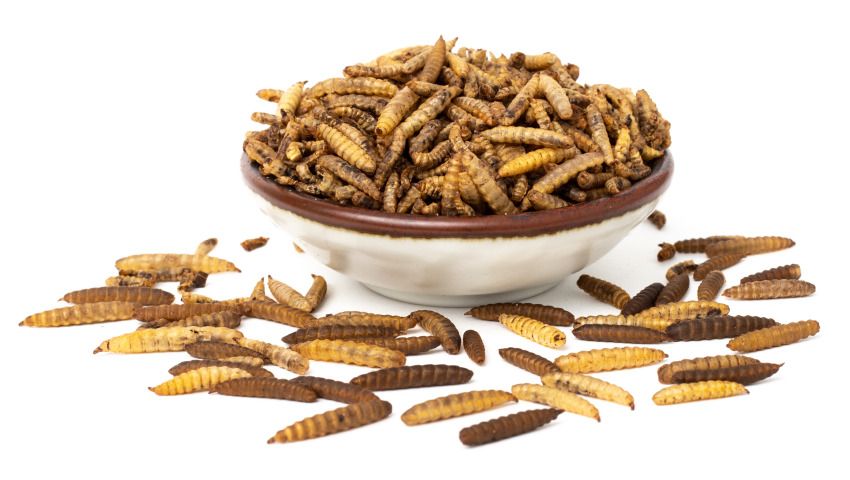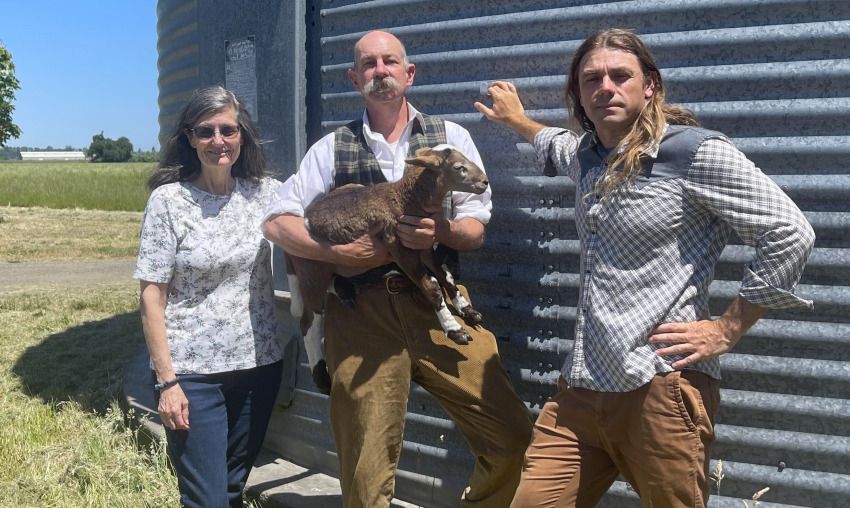Armed with cash from a Kickstarter campaign and a fervent belief that edible insects were the next big thing for human and planetary health, Pat Crowley introduced many Americans to the concept of eating bugs back in 2012 with the launch of cricket-fueled Chapul bars.
A few years later, the nascent edible insect field was strewn with the corpses of startups who ran out of steam as buyers demanded a consistent source of high-quality cricket powder and investors refused to fund larger-scale production without market validation. “It was an endlessly frustrating chicken and egg situation,” he observes.
As for a playbook on how to farm crickets at scale for human consumption, meanwhile, there wasn’t one, notes Crowley (LinkedIn profile: “In search of food and water”): “I had to build my own supply chain.”
But for those who have stayed the course, the market opportunity for insect ag is finally coming into focus, says Crowley, who has since focused efforts on raising black soldier fly larvae (BSFL) for pet food, animal feed, and biofertilizer via Chapul Farms.
An insect agriculture project development company that designs, builds, and operates commercial scale BSFL facilities in partnership with Nexus PMG, Chapul Farms works with soil health specialist Soil Food Web on a 600-acre regenerative farm in McMinnville, Oregon.
AFN caught up with Crowley to find out more about larvae, pivoting, and convincing people to part with money: “The short-term vision of capital is one of the most frustrating things in this business.”
AFN: What sparked your interest in bugs?
PC: I was pursuing a career in watershed hydrology, looking at our food, our water, and our use of natural resources and I realized that the system was wildly broken for lots of reasons. But it was a TED talk I heard from a Dutch professor of entomology in 2011 that really put the idea of getting insects into our agriculture into my head.
At that point, I thought the most effective way to do that was by creating a product people would talk about, so I made some cricket flour and bars, commercialized them via a Kickstarter campaign, and then had tens of thousands of in-person conversations with people to get feedback.
We entered the natural product category, found a co-packer, went on Shark Tank, and did a national launch with [leading natural foods distributor] UNFI, but building both a supply chain and a food company was a pretty tall order.
It needed a larger effort than just what startups in the space were able to do, but the larger players were reluctant to get involved in the supply chain, and so that became the need of the industry and what I’ve been focused on ever since.

AFN: Where do you see the biggest market opportunities today for edible insects?
PC: There are several markets you can serve [with edible insects], but what I’m focused on now is their incredible capacity for circularity, where insects consume organic waste as feed and create healthy soil as well as protein for poultry feed, aquaculture, and pet food.
Insects leverage millions of years of microbiological evolution to process organic material into healthy protein and fat, add microbial life to soil, eliminate food waste, decrease agricultural greenhouse gas emissions and our reliance on fossil fuel and unsustainable inputs in agriculture.
You have states saying we’re going to halve our organic material going into landfills, for example, but there’s not really a definitive plan for how they’re going to do that. And insects can really fill that role right now, as black soldier flies eat rotting decaying material.
There are scores of food processing facilities that are turning out large volumes of pretty consistent organic matter [that black soldier flies can eat], from juicing facilities to whiskey distilleries, to sugar beet production, so there’s plenty of fairly consistent feedstocks available right now.
We have AAFCO [Association of American Feed Control Officials] regulatory approval for [feeding black soldier fly larvae to] salmon, trout, adult dog food and poultry. But one market that is endlessly interesting to me is the backyard chicken market, which really grew during the pandemic. The benefits of black soldier fly larvae as chicken feed are tremendous: healthier eggs, healthier feathers, and we’re seeing great work now on the immunological benefits.
Another interesting market is trout production in the US, where they haven’t really been able to get fish meal—herring, anchovies and so on—out of the diet. And those populations aren’t increasing, so there’s this massive need in the industry for alternatives.
Black soldier flies have a similar amino acid profile to fishmeal and there’s also some exciting academic work looking at how feeding them to fish gives them a healthier gut.
The other market that has AAFCO approval is adult dog food, so you’re seeing several of the big pet food companies making investments into the space, as they have a consumer base that is very scrupulous about ingredient profiles, and they are making public commitments about reducing their carbon footprint.
Insect frass also has tremendous benefits, increasing the bioavailability of nutrients that are already in the soil and reducing the need for pesticides because they trigger natural defensive mechanisms in plants, so it fits really well into conversations about regenerative agriculture and integrated pest management.

AFN: What’s next for Chapul Farms?
PC: Right now we have an innovation center at our site in Oregon, which is on a farm, and we’re doing a bunch of commercial trials with insect frass [waste] as well as longer term studies on [the impact of BSFL frass on] carbon sequestration.
Our goal is to begin construction on our first commercial facility in North Dakota by the end of this year, but we’ve been putting together all the building blocks for multiple projects in the United States. We’ve partnered with the engineering firm called Nexus PMG, and we’ve targeted a project finance model, so each project is its own company that raises its own capital.
Our North Dakota facility [co-located by a corn bioethanol plant] should take in about 50,000 tons of feedstock per year and should produce about 5,000 tons of dry larvae and about the same amount of frass.

AFN: Can you still make an efficient, profitable facility at a smaller scale?
PC: Most certainly, a facility producing 5,000 tons is still an eight-story building with 150,000 square feet using systems for warehouse management and microclimate control that have already been tested in vertical farming systems.
I think there’s absolutely mileage in small projects for backyard chicken operations all the way up to multimillion-dollar projects [initiated by firms such as Ÿnsect, InnovaFeed, Aspire Food Group, who are building vast automated facilities supplying more industrial markets].
We need to build commercial-scale facilities around these more consistent feedstocks, but the need for managing very highly variable sources of organic waste is also massive.
Right now, we’ve demonstrated there’s a market [for edible insects] by distributing other people’s products, so we’re distributing black soldier flies from South Africa and crickets from Vietnam that are fed on cassava leaves, and we have commitments to sell for a couple of years to some of our most strategic partners.
What an investor wants to see [to fund a new facility] is a contract for everything that comes out of your facility lined up for at least as long as it takes for them to get paid back.
A lot of the market demonstration to potential investors is actually with the backyard chicken market, just demonstrating what the price point is, what the margins are, and where the growth is, so we’ve really tried to build a collaborative approach and develop relationships with trout farmers and backyard chicken companies.
AFN: Do you still think there’s a market opportunity for insects in human food in markets such as the US?
PC: Absolutely, but it will never grow beyond a certain point without a reliable supply chain.
AFN: What’s been the most frustrating aspect of your work in the insect ag field?
PC: Just the endlessly frustrating chicken and egg situation of trying to fund facilities. To get the capital, the market wants to see the volume, and you can’t supply that without money for production facilities.
I’ve come to the realization that we need large amounts of capital to come into insects to address large amounts of organic waste. That’s what’s needed right now, and the short-term vision of capital is one of the most frustrating things in this business. It’s just the constant, unrelenting short-term thinking.





